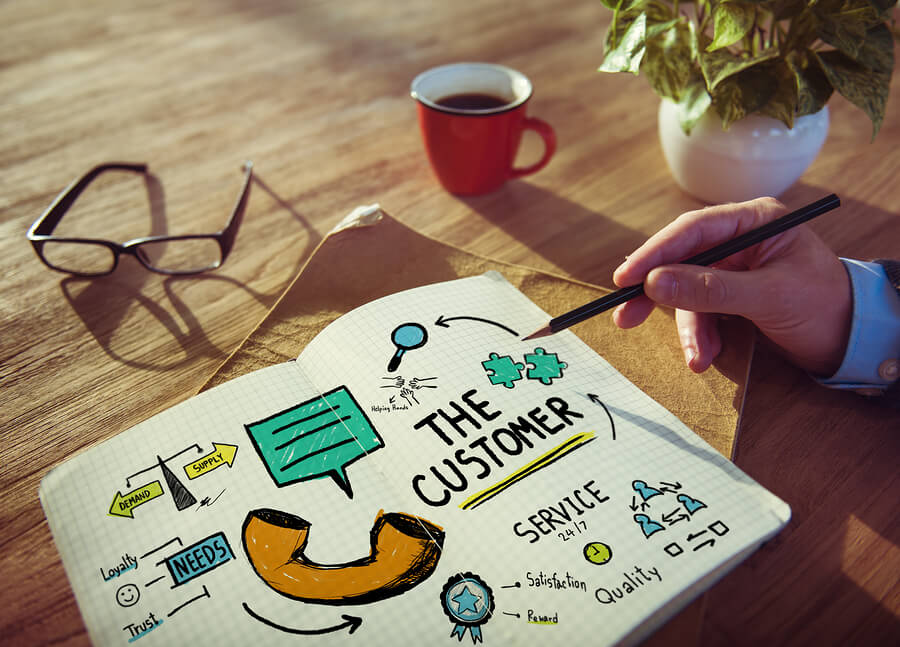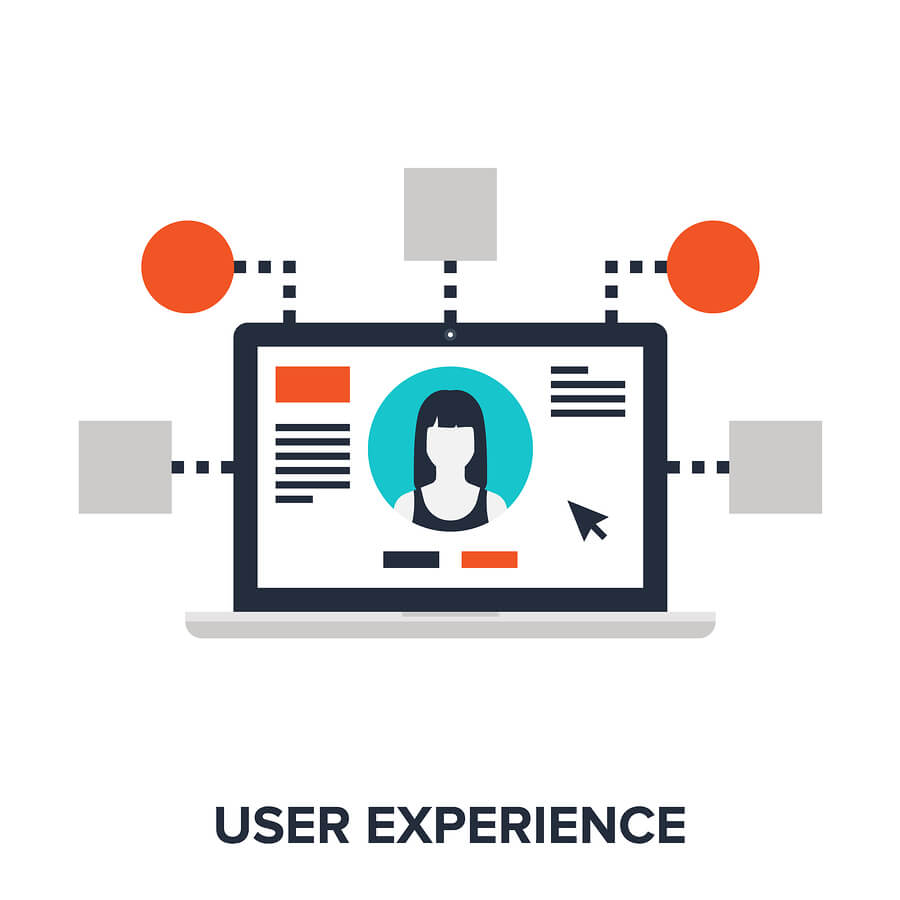Customer experience is not about isolated moments such as that telephone conversation with a sales rep or a trip to the shop. Instead, customer experience is what actually defines your brand. It's a sum of each moment where a customer interacts with your brand, and these interactions usually unfold over time, across different channels and through different mediums.
Customer experience can be measured by the overall satisfaction a customer has with your brand as well as the likelihood of that customer continuing to do business with you and even recommending your brand.

Customer Journey Maps
Is your business doing enough for customer experience?
The best place to start looking for an answer to this question is a customer journey map. A customer journey map helps identify when a brand moves in and out of a customer's journey, highlighting their needs at each point and the key interactions where your brand can help deliver on those needs. There are four stages in a customer journey map:
- Discover. Identify the motivators for customers which start them on their journey of being a customer. Establishing how they discover and interact with your brand is an important part of this process. Was it through advertising, social media channels or visiting your website? Identify which aspects of your business customers are most likely to encounter. Will they talk to your sales team or your marketing department?
- Engage. How can your customers engage with you? Is it an option of walking into your shop, visiting your website on their phone or contacting you on social media? During this stage, customers could be looking for all sorts of information from your brand; whether it's information, assistance or a service. For instance, they may be looking for recommendations, technical information or brand endorsements. And again, which aspects of your organisation will they be engaging with? Is it more appropriate for them to talk to a sales team or product specialists?
- Convert. This stage takes someone from being a prospect and converting them into a customer who is going to be using your product or service. Are you going to get them on board via phone, online or in person? An overlooked but critical aspect of the conversion process is what happens when something goes wrong? Make sure you have a strategy in place to quickly rectify any issues. As with the previous stages, outline which aspects of your organisation they will be engaging with.
- Support. This could refer to technical support or billing inquiries. Customers will most likely be interacting with a support team or with an account manager at this stage. Remember, they're your customers now, so perhaps look for ways they would like to be rewarded.

Delivering a Connected Customer Experience
Throughout the four stages mentioned above, the overarching challenge revolves around how your customer journey can be delivered as one seamless experience instead of disconnected stages. This will enable the best possible overall result for both business and customer.
A good user experience is often considered to be all you need in order to deliver a good customer experience. However, there is much more to it than this. User experience is part of a broader customer experience strategy. So this could be in the context of screens within your website, a mobile app, or even the functions customers try to do within your physical store. A good user experience usually can be measured by the speed and ease in which customers can complete tasks and the ability to find information quickly and easily.
Related reading: [Blog post] 7 Digital Customer Experience Trends to Consider
Analysing Interactions
If customer experience encompasses all interactions a person has with your brand, it should be measured through holistic aspects like overall brand experience, likelihood of continued use and likelihood of somebody recommending your brand. This means that one bad user experience, regardless of where it occurs during the customer process, can impact the overall customer experience.
So what makes a great user experience and how can you measure it? Here are a few tips:
- Understand different audiences. Different types of people demand different user experiences. Find similarities and work towards delivering user experiences that work for that particular group. This could lead to displaying more helpful information upfront or simplifying your navigation.
- Be more task-orientated. Start with ranking all features and content on your website by what's most important and what's most frequently accessed by visitors.
- Make your site easily navigable. Customers should be able to find information on your site very easily using navigation menus and site search.
- Survey & Interview. On average, you're only going to hear back from about 4% of your dissatisfied customers. So consistently try and capture the attention of the other 96% and find out why your user experience isn't working for them. This will highlight processes or interfaces that may need reworking or simplifying. You might have the best advertising, brand recognition, sales team, and customer service reps, but if your website is creating barriers for your customers, then your overall customer experience may suffer.

Websites and Customer Experience
"In an era when companies see online support as a way to shield themselves from 'costly' interactions with their customers, it's time to consider and entirely different approach: building human-centric customer service through great people and clever technology. So, get to know your customers. Humanise them. Humanise yourself. It's worth it."
This quote highlights that online platforms need to be considered as part of your complete customer service strategy and not just an isolated destination. But there's a big challenge here, right? How do we design websites from a human-centric perspective?
Let's explore a few important technical considerations that can help us move from isolated visits, clicks and bounce rates to connected interaction-based customer experience:
- Channels and devices. This could include your website, emails you send, Facebook, Twitter, YouTube, Instagram accounts, and even offline channels such as your call centers and physical premises. The challenge is to ensure each interaction, regardless of the channel or the device that it takes place on, follows on from the last instead of starting from the beginning each and every time. So how do you connect your customer's experience across different channels and devices? First, ensure that your websites are mobile-ready (look into mobile-responsive techniques). This will enable you to only have to build web pages once, knowing that they will know how to present themselves on devices of a different size. Then look for ways to recognise customers each time they interact with you, visiting your website from different channels and also different devices.
- Big data. This is really just a name that's given to the growing level of data being automatically generated and stored from all those digital platforms and devices out there. Take a website as an example; every scroll, click, swipe, and selection that your customers make on your site is generating data. Even bar code scans, check-ins, phone calls, mobile app usage, and social media activity are all generating data that can be harnessed. This is the concept of big data. Bringing together all that data from your website, phone systems, CRM marketing tools opens up an opportunity as this data can be used to understand the customer, their interests, goals, and even their frustrations. You can then use this to provide a 360-degree view of a customer's journey with your brand. So how can all that data be unlocked? Well, you're probably already sitting on top of a whole pile of big data already stored in platforms such as Google Analytics, marketing tools such as Marketo or email campaign tools such as Campaign Monitor. So first, look for ways to export and group that data out of those systems based on individual customers. Then look for data that represents a customer action, interest, or intent. Find ways to make that customer information available to each of the interactions you have with your customers. Another idea is to look for analytic platforms that can plug into your website, which really focus on tracking interactions and behaviours. These will help convert all of that data that you send them into meaningful and accessible customer information. Two recommended platforms I can make are Mixpanel and Kissmetrics.
- The last consideration is how to personalise each interaction. Every time a customer interacts with your brand, they are supplying information about themselves. Sometimes it's explicit (such as providing their name) and other times it's implicit (such as they may visit a web page on a particular topic). But this creates an opportunity to continuously adapt and personalise a user's experience based on this information. This is done by delivering the right messaging and content to the right person at the right time based on your understanding of their customer journey. So how can you personalise your content and messaging? Well, start by doing a content audit. Identify all the important points on your website where targeted messaging or content may deliver a personalised experience to a specific audience. Then build up variations of your key content and your key messages for different audiences. If you can couple this with the big data you have on your customers, regardless of where it's from, it can help drive what messaging or content from that library you choose to show to which audience.
Related reading: [Blog post] How to Use Dynamic Content Personalisation to Increase Website Engagement
The Elcom Platform and Customer Experience
Elcom is a globally recognised web CMS, with over one million end-users and a global web team. We work with mid-enterprise organisations to achieve their corporate objectives by delivering powerfully simple web solutions and customer experiences. The Elcom Platform powers internet websites, portals, mobile, social, learning sites, and it has over ninety base features out of the box. So the platform makes it easy for you to quickly and cost-efficiently deploy solutions and support collaboration across your entire organisation. Even if you are at the early stage of considering CMS options, or if you're looking at ways to improve customer experience or bring together these different interactions and touch points, we're happy to come and meet with you and even help scope your needs and develop a functional plan and budget, obligation free of course.
